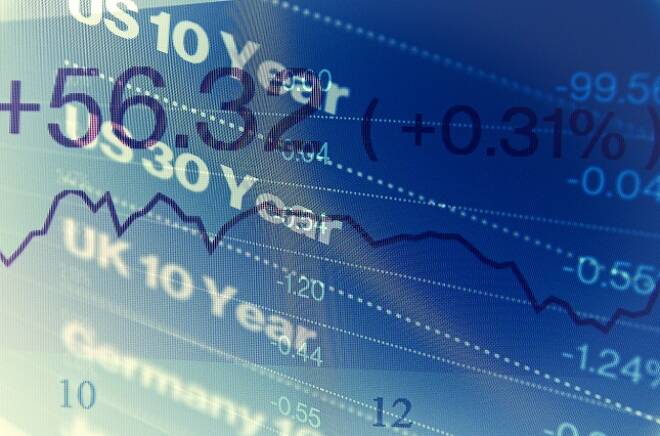Advertisement
Advertisement
U.S. Treasury Yields Dip after Consumer Inflation Rose Less Than Estimated
By:
Core CPI, which excludes food and energy, came in 0.1 percent higher, missing the 0.2 percent forecast. This put annual CPI 2.1 percent higher from a year ago, below the 2.2 percent estimate.
U.S. consumer inflation rose by less than estimated in April as costs for automobiles and airfares declined, reducing chances that inflation will overshoot the Federal Reserve’s target in coming months.
According to the U.S. Labor Department, the Consumer Price Index advanced 0.2 percent from the prior month after a March decline of 0.1 percent. Traders had priced in an increase of 0.3 percent.
Core CPI, which excludes food and energy, came in 0.1 percent higher, missing the 0.2 percent forecast. This put annual CPI 2.1 percent higher from a year ago, below the 2.2 percent estimate.
According to the government report, prices for used cars had the biggest monthly drop since 2009 and airfares fell the most in four years. The report suggests inflation isn’t surging in a way that could rattle the Fed policymakers, despite higher freight costs, a tight labor market and tariffs that are burdening businesses.
The weaker-than-expected CPI news isn’t expected to alter the Fed’s plans to raise interest rates at least two more times in 2018 with the next rate hike widely expected at its June meeting.
Rising energy prices have been a concern for consumers lately, but fuel only provided a modest boost to the broad CPI, which rose 2.5 percent in April from a year earlier. Seasonally adjusted gas prices rose 3 percent in April from the previous month after a 4.9 percent drop in March, according to the government report.
Other details of the report showed energy prices rose 1.4 percent from the previous month after 2.8 percent decline; food costs advanced 0.3 percent after a 0.1 percent gain.
Costs for new vehicles fell 0.5 percent after being unchanged the prior month; used-vehicle prices dropped 1.6 percent, the most since March 2009, following a 0.3 percent decline.
Airfares fell 2.7 percent, the most since January 2014.
Apparel prices increased 0.3 percent after falling 0.6 percent.
Expenses for medical care rose 0.1 percent.
The U.S. Dollar held steady after the release of the report, but gold prices surged higher. U.S. 10-year Treasury yields spiked lower on the news since lower inflation may mean the Fed will have to stop at two rate hikes this year. The drop in yields helped boost stock prices ahead of the cash market opening.
About the Author
James Hyerczykauthor
James Hyerczyk is a U.S. based seasoned technical analyst and educator with over 40 years of experience in market analysis and trading, specializing in chart patterns and price movement. He is the author of two books on technical analysis and has a background in both futures and stock markets.
Did you find this article useful?
Latest news and analysis
Advertisement
